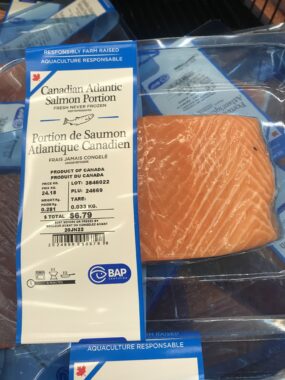Fresh salmon continues to see a drop in unit sales as inflation hits American households.
Data in the four weeks ending July 10 shows seafood as the only entry in the fresh category that saw a double-digit decline in units sold.
Fresh salmon
Fresh salmon in multi-sales retail outlets in the United States was at $11.22/lb during the four-week period ending July 10, down two cents from the previous four weeks.

The slight fall in price narrowed the rate of decline in sales for the category, as latest data from Chicago-based market research firm IRI shows unit sales of fresh salmon fell by 8.7 percent year on year. In May, the decline was 9.6 percent year on year.
The total units sold was 17.9 million lbs of fresh salmon in the four weeks ending July 10. This is just half-a-percent less than the volume US retailers sold in May.
Dollar sales reached $200.2 million, down less than 1 percent from May.
Compared to a year ago, fresh salmon sales were down 8.7 percent by volume but up 5.5 percent by value.
Inflation hits seafood badly
IRI data shows year-over-year unit sales were down across the board in June, with seafood as the only one in the fresh category that saw a double-digit decline. Grouped under the “fresh category” are meats, produce, deli, bakery and other perishables.

Dollar sales of aisle-fresh seafood went down 13 percent from a year-ago period while frozen seafood went down 7.6 percent.
The sales trend is similar in terms of volume: Aisle-fresh seafood went down 23 percent, while frozen declined by 16 percent year-on-year.
The annual inflation rate in the United States rose to 9.1 percent in June, the highest since November 1981. Market research firm Datassential says all households are modifying their purchasing behaviour on essentials, including food, except for the low-income group which is cutting back only on non-essentials, suggesting that their food budget is already bare bones.









